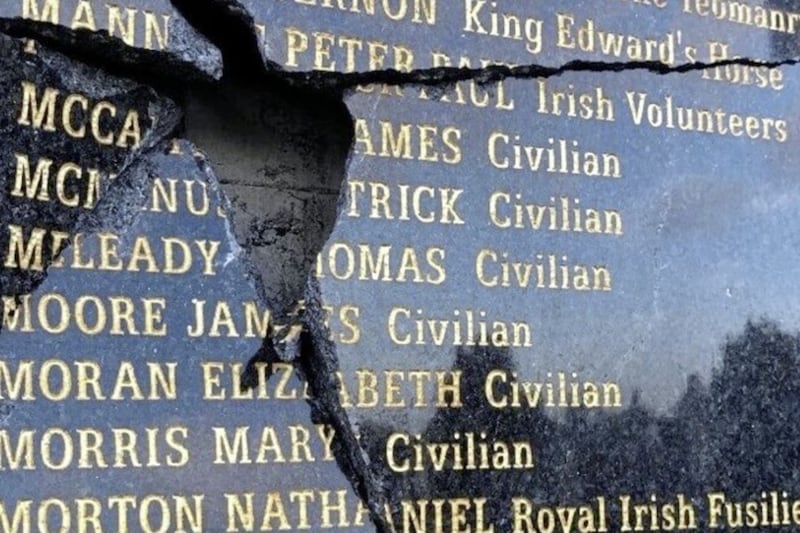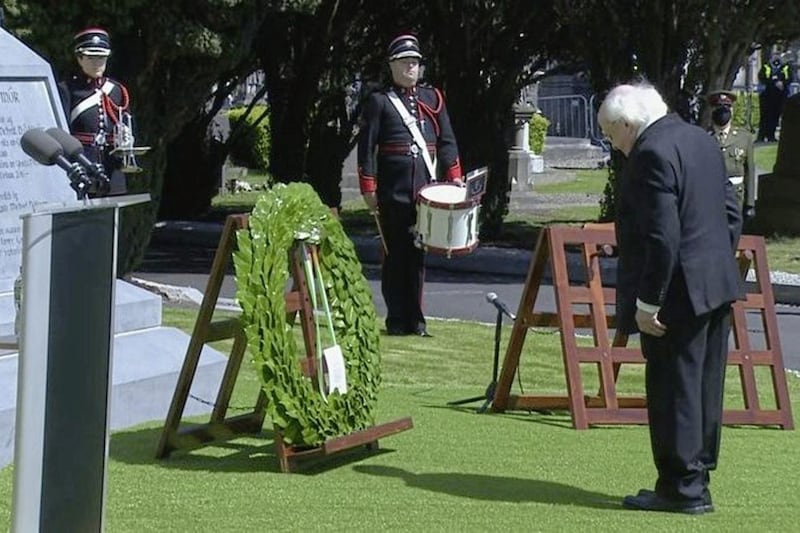THOUSANDS of visitors come to Dublin’s Glasnevin Cemetery each year to visit many of its famed revolutionary dead, which include Michael Collins, Éamon de Valera, Countess Constance Markievicz, Roger Casement, Cathal Brugha, Harry Boland, Kevin Barry, Helena Moloney, Elizabeth O’Farrell and many more.
The cemetery was established in 1832 as non-denominational by Daniel O’Connell and today covers 140 acres. It is a place of rest for those of 25 different beliefs, faiths and none. It is a place where capitalist and socialist, Protestant and Catholic, nationalist and unionist lie side by side.
The cemetery can allow visitors to explore the history of the island of Ireland over the past two centuries through many guises. I applied for the position of tour guide in the cemetery in late 2015 as part of the ongoing Decade of Centenaries, and to my surprise Dublin Cemeteries Trust gave me the opportunity to tell visitors the stories of some of the most significant graves in the cemetery - a job I feel privileged to do, and one I continue to do to this day.

During that time, I have learned about many overlooked legacies, and over the past four years I have been trying to choose which people to write about as part of my book on Glasnevin, So Once Was I. With one-and-half-million candidates, it has taken some narrowing down.
There are some northern figures, however, whose histories stood out as neglected, forgotten and deserving of more attention.
Read more:
Perhaps the most overlooked northern figure buried in Glasnevin is Ernest Blythe (Earnán de Blaghd), who lies in the Garden section of the cemetery. Born in into a Presbyterian and unionist family in 1889 in Magheragall, close to Lisburn in Co Antrim, during his life he was many things and wore different hats.
At the age of 21 he joined the Newtownards District Orange Lodge 1501, while simultaneously a member of the Irish Republican Brotherhood in Dublin. He worked as a journalist, was an Irish-language enthusiast, was Minister for Finance and later Posts and Telegraphs, senator in the Houses of the Oireachtas, hunger-striker and managing director of the Abbey Theatre.

Blythe was also an outspoken supporter of the Army Comrades Association and he even proposed the colour of their shirts which earned them the nickname ‘Blueshirts.’ To some, he is simply remembered as the Minister for Finance who cut the Old Age pension from 10 Shillings to nine Shillings a week in June 1924.
Despite all of this, his legacy has become lost to more popularised tales of the revolutionary period 1916-1923. Up until 2019, there was no full biography written about the multi-faceted character that was Ernest Blythe.

Another strong northern voice at rest in Glasnevin is Joseph Locke. Born Joseph McLaughlin (1917–99), the famous Derry singer’s ashes today lie in the cremation section of Glasnevin, beside Charles Stewart Parnell’s grave.
A renowned tenor singer and entertainer with a powerful voice akin to that of Count John McCormack he served as a police officer, initially singing with the Irish Guards before rising to fame in the 1940s performing in London and establishing a long-term engagement in Blackpool.
Some of his most famous recordings included Hear My Song, Violetta and Blaze Away. His career faced challenges due to tax issues in later life and for a period he faded into obscurity. An unexpected revival with the success of the 1992 semi-fictional film Hear My Song starring Adrian Dunbar and James Nesbit brought his name back to public attention.
Close to the Gravediggers (John Kavanagh’s pub) entrance to the cemetery, you will find the grave of Sir James Murray, the medical pioneer born near Maghera in Derry in 1788. He invented fluid of magnesia more commonly known today as ‘milk of magnesia’ and was appointed the first Inspector of Anatomy for Ireland in 1832.
This job was all about outlawing the practice of graverobbing and bodysnatching. Thanks to the work of Dr Murray the practice of desecrating the dead by ‘resurrectionists’ was greatly reduced. Although he did much in his life, with contributions to both science and medicine, sadly his greatest legacy is usually attributed to the American, John Callen, and Englishman, Charles Henry Phillips, who patented the extremely popular antacid and laxative re-branded as ‘milk of magnesia’ in 1873.
Beneath an ornate Celtic cross in the Old Chapel Circle close to Dr Murray’s headstone lies the ‘Mistress of the Macabre’: author Rosa Mulholland, born in Belfast, is now one of the cemetery’s most forgotten literary figures.
Charles Dickens greatly encouraged Rosa and published some of her work in his monthly magazines. Her works focused a lot on a love for the countryside, its superstitions, folklore and an understanding of the extreme poverty existing at the time.

She was particularly noted for her ghost stories. In her story, Not to be Taken at Bedtime (1865), she wrote: “The lonely graveyard is far away, an’ the dead man is hard to raise”. During her lifetime, she published over 40 novels, but is quite forgotten about today.
Rosa married the respected historian William T Gilbert and became better known as Lady Gilbert up until her death in 1921. On the centenary of her death in April 2021, I walked down to her grave to see a commemorative book with some of her publications on top of it, weighted down with some small stones. It was nice to know that someone had remembered Glasnevin’s Mistress of the Macabre.
It is said you die twice, once when once when you die and a second time when people say your name for the last time. Stories like these serve as a reminder that among the grandeur of Glasnevin’s famed monuments, thousands of forgotten lives lie waiting to be rediscovered.
It also makes you think: how will future generations choose to remember and commemorate us? Even as times change, Glasnevin stands as a testament to the value of every individual’s story.








